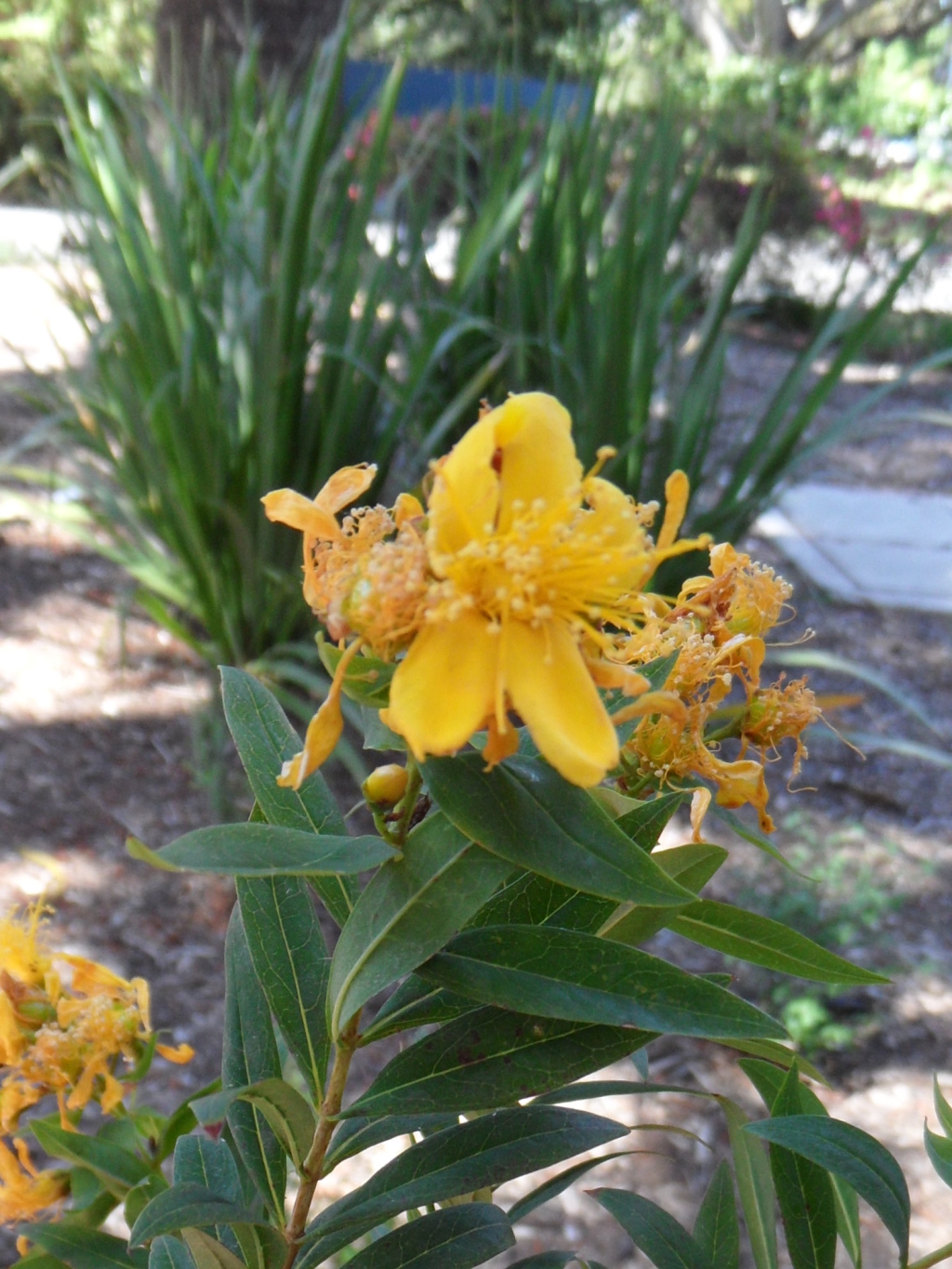Hypericum canariense
L.Medium to large shrub 1–4 m high; stems obscurely 2- or 4-ridged, becoming terete with age. Leaves narrowly elliptic to oblong-elliptic, 2–6.5 cm long, 4–15 mm wide, base attenuate or cuneate, apex usually acute, lower surface paler than upper, tertiary nerves finely reticulate. Flowers in sparse to dense terminal corymbs; sepals unequal, broadly obovate-oblong to lanceolate, 3–4.5 mm long, not black-dotted; petals narrowly oblanceolate, 12–17 mm long, bright yellow, not black-dotted, persistent after flowering; stamens numerous, in 3 indistinct bundles, slightly shorter than petals; styles 3, 2.5–5 times longer than ovary. Fruit ovoid to ellipsoid, considerably longer than sepals; seeds flattened-cylindric, 0.5–1.5 mm long, minutely ridged longitudinally. Flowers Oct.–May.
GipP, OtP. Also naturalised WA. Native to the Canary Islands.
Occasionally grown in cultivation in Australia, becoming weedy in coastal scrub and railway enbankments around Port Phillip Bay and Western Port (e.g. Flinders, Black Rock, Elsternwick, Drysdale).
 Spinning
Spinning



